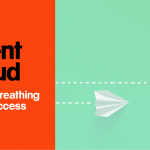Sarah Taylor, Transformation Manager at Sol-Tec
When I ran an IT team, there were only two rules. Apply common sense and always check your spelling.
Then there was #OwnIt. If you identified the task or the problem, you were empowered to deliver it or find the solution. Collaboratively ideally, but definitely empowered. Ok, that means there were three rules. Oh, and be helpful. Also don’t challenge my arithmetic. So just the five rules.
Here at Sol-Tec, we know adopting and delivering cloud IT is common sense.
That’s why we are such advocates for it across public sector, where efficient and cost effective IT has a real impact for every single one of us, as we are residents within a Council area, patients in the NHS and tax payers to Her Majesty’s Revenue and Customs. Those of us who have come from public sector into this (obviously) private sector Microsoft Partner business, are here because we care about delivering good public services and by partnering with the public sector nationwide as one of the Sol-Tec team, we can make a difference across a wider set of organisations than our previous roles enabled.
Our focus on public sector has led me to ponder on how the benefits of cloud technology might differ between public and private sector. When we think about organisational focus, there’s definitely some key differences between the two – one cares about delivering services within budget, the other about hitting the bottom line – and one will slice their reach around the geography or legal remit, whilst the other will deliver to customers or other businesses based on appealing services and products.
Nonetheless, the move to cloud seem to stack up across the board, because using cloud IT has some really good, common sense reasons, that address universal challenges.
Cloud IT is there when you need it.
It sure is. I mean, do I have to expand on this? It’s not that there is never, ever an occasional outage, although the very few I have experienced over a number of years have been down to an issue in a layer on top, such as authentication. And of course, there could be some horrible future global event, natural or man-made, that even the most cast-iron resilience can’t match. Probably still better uptime than your local infrastructure though.
Fundamentally, however much you pimp your data centre and match it with a lookie-likie in another location, you can’t out-do the big public cloud suppliers for keeping your stuff safe and available. For a few years, we’ve been articulating the benefits of getting your infrastructure into the cloud and your productivity suite is probably already there too, but now, full cloud delivery is a fully fledged reality. Hey there, how are you using Windows 10 on your iPad? Woah, you got into the system via your phone?!?!? Windows Virtual Desktop, you say? Neat.
Cloud IT evolves with you.
I totally get that it is in a vendor’s interest to keep producing new versions of successful things. It’s a great commercial strategy to produce variations on a theme and watch people climb over each other to have the new and shiny iteration, even though they had something nearly as good already. We don’t need to give explicit examples here, right? You might have succumbed to that yourself; I know I have….”and mine is better than yours anyway because it has a triple camera system and I can use it 4 metres underwater when I feel inclined to.”
So, kudos to those who promise one final version of something that will evolve with you. Not that Microsoft are the only ones to do it and I’m keeping my fingers crossed they don’t u-turn on this, but hoorah for Windows 10 and Office 365. I have taken them at their word and not been disappointed yet, that such vital things as the operating system and the productivity suite will last pretty much eternally, with regular small iterative updates rather than the big bang changes we used to go through every couple of years. Anyone up for another upgrade on the scale of XP to Windows 7? Weeks or even months of planning the work, consulting on the downtime and hand-holding end users was fun though. What will we do with the time now?
I hear you shouting “Sarah, that’s not all cloud. You’ve tripped over yourself there. Get a grip.”
Sssshhh there, stay calm. And tone down the passive aggression, yeah? Essentially though Windows 10 on your device is a gateway to your cloud technology…and as if by magic, you can now get yourself a continually evolving, snazzy Windows 10 desktop in the cloud courtesy of Windows Virtual Desktop. Yep, nailed it right there. All the familiarity of Windows 10 and all the systems you need every day, on your choice of device. Brilliant.
Cloud IT matches your workforce’s expectation.
Try telling Madison, your new Gen Z recruit, that they need to work on a fixed device and can’t access their work stuff any other way. It’s not just your Gen Z who will think that sucks, either. Even us long-term-workforce-occupiers now factor modern IT and the working practices surrounding it, into how appealing working for you might be. Most people just want to do their job, and ideally enjoy doing it. If you say your job involves “doing some work on IT”, there’s a good chance that IT experience is not too much fun. It almost certainly doesn’t match the responsiveness of the IT you use in your personal life and it falls woefully behind on your expectations.
A success measure for IT in your organisation is when people use IT without consciously labelling it, in the same way we don’t think twice about the chairs we sit on unless they’re uncomfortable or the people we interact with, unless they’re awkward. Making the flaming great assumption that most professionals use technology somewhere in their work these days, it is those who would have to think for a minute about where they use IT that are having the best time of, quite literally, using IT. If IT is hindering you rather than enabling you, you are going to be very aware of it and probably not particularly fond of it.
Back to Windows Virtual Desktop then – quick start up, good performance, easy to use. This one isn’t going to be a fad. It’s a cloud technology that adapts as your business and your workforce adapts. It’s what will make you better today than you were yesterday. And along with the rest of cloud, it enables people to work the way they want to, wherever they are. Simple.
Excuse me now whilst I head off to work on rule six…….





